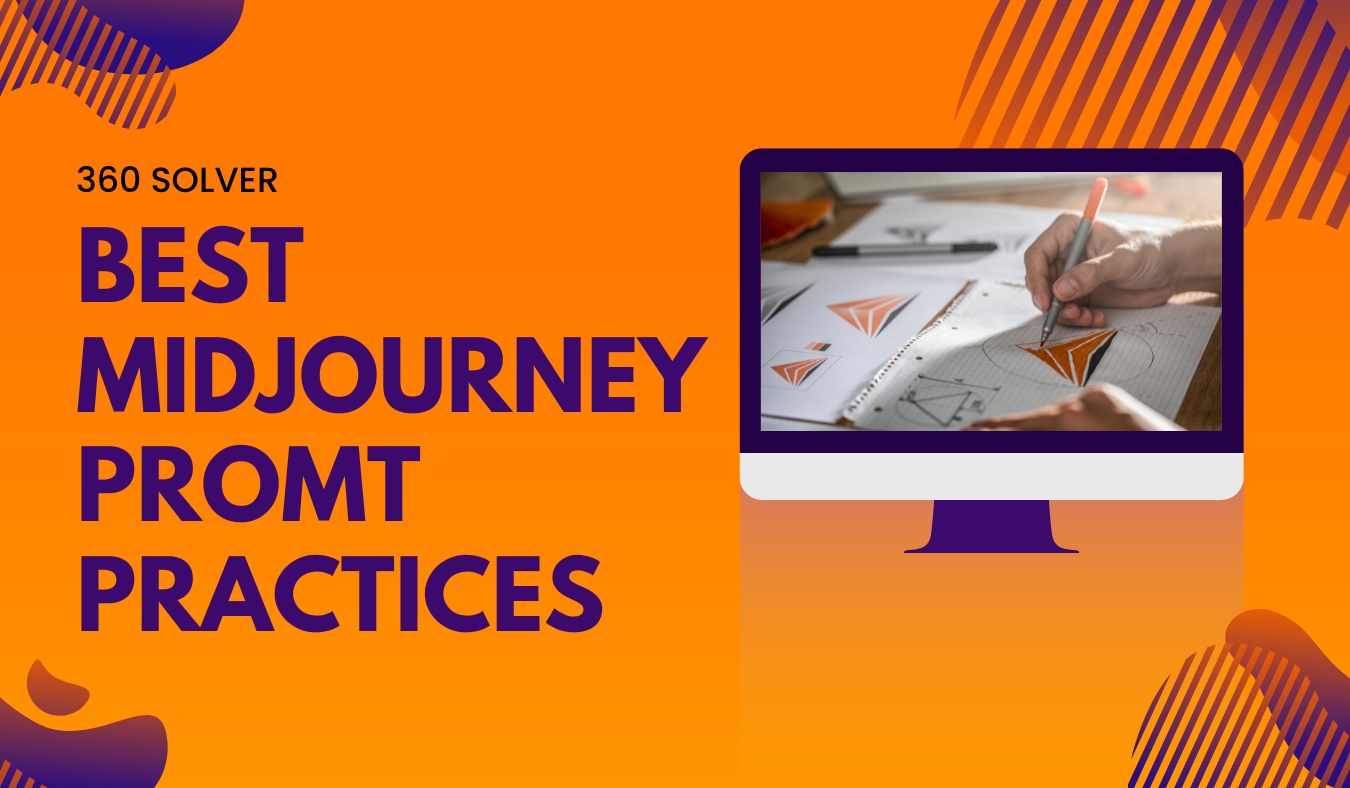Best Midjourney Promt Practices
Being able to create Midjourney prompts is essential for creatives to produce designs more quickly, consistently, and distinctively. Learn about the parameters and best practices for image production, then work with me to put these ideas into practice using sample prompts and recommendations for improvement. You’ll quickly become an expert at Midjourney!
It’s quite something magical the first time you utilize AI to generate photos. However, it’s actually amazing when you take a deeper look and see how many advantages AI image creation tools like Midjourney provide. It’s very unlikely that Midjourney has been so popular in the last year given its quicker sourcing, greater consistency, and increased specificity.

We will know, how to create the greatest Midjourney prompts and use AI to expand design processes without sacrificing quality; In this article.
Prompting 101: How To Use Midjourney and Discord
Discord’s servers are the core of Midjourney. It means that in order to access and interact with the Midjourney bot, you will require a Discord account.
I would advise using the direct messages option on Discord for connecting with the Midjourney bot. You don’t need to contaminate any group or public channels you might join in the process.
Selecting a command is the first step in interacting with the Midjourney bot. Each command begins with the forward slash “/”
Although there are several Midjourney commands available, “/imagine” is the most commonly used one. With this command, Midjourney will create a variety of illustrations for you. However, we’ll talk about that in more detail later.
Some other commands include:
/describe: This command makes use of an image you upload to generate four sample prompts. This command is excellent for both beginners seeking to learn how to write prompts and those seeking ideas for how to modify one.
/shorten: This command prompts you to enter a longer prompt and then gives you tips on how to make it shorter.
/tune: With this command, you can use a prompt to create a Style Turner, or in design terms, a style guide. To ensure proper usage of the /tune command, check your style guide.
Midjourney Prompting Best Practices
There are many similarities between the writing prompts for Midjourney and ChatGPT. Let’s go through some great practices to keep in mind when creating Midjourney writing prompts.
Keep it simple
Write your prompt in an easy-to-read way. An image can be created with just one phrase, or even an emoji. In case you prefer a more general illustration or lack an individual style, simple directions will use Midjourney’s default design. That means a more detailed request produces a better result if you’re going for an unique design.
But lengthy prompts aren’t always preferable either. Focus only on the primary ideas you wish to create; ignore anything else.
Simple prompt: A dog.
Descriptive prompt:
A dog chasing a frisbee while running in a field. Realistic. Wide angle shot.
Unnecessarily lengthy prompt:
A Labradoodle dog chasing a frisbee when running in a field that’s surrounded. Make it look realistic. Use the brand color #5D3FD3.
Use Synonyms
Sometimes, we don’t get what we want knowing to the words we use. Similar to read a creative brief, there are also times when we need to ask questions about certain languages. It is explained via the use of synonyms.
Therefore, try with different phrases if the AI output doesn’t fully match your intended request.
Forget About Grammar
The Midjourney Bot has human-level understanding of grammar and sentence structure. Therefore, aren’t worried over using perfect grammar when responding to writing questions.
To help you order your thoughts, you can still use commas, brackets, and hyphens; just be aware that the Midjourney Bot may not understand them accurately.
Avoid using negative words
Avoid thinking about pink flamingos and instead focus on blue animals. And which animal comes to mind? You might surprise yourself by realizing that you and AI have more in common if the response is pink birds!
AI functions similarly to how a child would when instructed not to press the red button. Their only concern is pressing the red button, and that’s usually the only “output” that results with it. Therefore, refrain from using any sexist remarks in your prompts.
- [/imagine] an image of a cat. Avoid the color white.
- ✅[/imagine] an image of a brown cat
Perfect the specifics
Consider the creative briefs you have already written or being provided. These kinds of specifics are just as important for your Midjourney prompts. Here are a few instances:
- Subject: What or who is the primary topic? Is it a certain object, place, animal, character, or person?
- Action: What action do you wish to see taken by your subject?
- Environment: In which environment is the graphic located? Is it somewhere specific, or is it something more uncertain?
- Media: What kind of media should be used?
And also: Lightening, Colour, Mood, Composition etc.
Let’s go through two essential Midjourney parameters—aspect ratio and stylize—that you’ll probably need to work with while generating AI-generated photos.
Aspect ratio
An image’s width to height ratio is known as its aspect ratio. Usually, it’s written as two numbers, like 7:4 or 4:3, separated by a colon. This option modifies the aspect ratio of the photos.
Add this to the end of your prompt “– ar [add ratio here]” to indicate the aspect ratio you want.
Style
It’s important to realize that the Midjourney Bot was trained to generate photos that prioritize beautiful color, forms, and composition. This stylize option is useful in this case.
- ☞ Images with low stylization qualities are less artistic but still closely match the prompt.
- ☞ Images with high stylization levels are very artistic but have less relevance to the prompt.
Midjourney Prompt Examples and Designs
Are you curious in how these commands and suggested methods actually appear? Let’s look over some cool methods to use AI in the design creation process.
1. Using AI to generate 2D style art
“Create a vibrant 2D style art piece using AI algorithms to generate a whimsical landscape filled with imaginative creatures.”
2. Cyberpunk panda bear
“Design a futuristic cyberpunk panda bear, blending elements of technology and nature to create a visually striking character.”
3. Using AI to generate 3D style art
“Utilize AI to craft a mesmerizing 3D style art scene, depicting a surreal environment with intricate details and dynamic lighting effects.”
4. Using AI to generate hyper realistic images
“Explore the boundaries of realism with AI-generated hyper-realistic images, focusing on capturing the finest details and textures of everyday objects or landscapes.”
Start Creating Improved Pictures
AI will never be able to take the role of designers or marketers. That’s a hill I’m willing to die on. However, that does not mean AI won’t revolutionize the creative sector and enter current creative workflows to promote task acceleration, foster creativity, and increase capacity.
Because of this, it’s essential that you as a designer begin building your Midjourney skills in order to discover the best ways to integrate AI into your current design workflows and begin to see results for your company.

